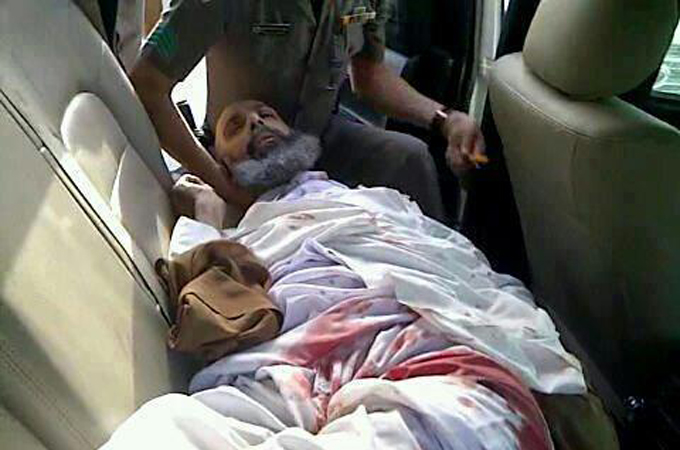One killed in alleged attack on Saudi police
Interior ministry says the man aided attack in restive east, but activists say he was merely walking on the street.

Security forces in Saudi Arabia have shot dead a man they accused of participating in an attack on a police station, an apparent escalation of tensions in the restive, heavily Shia Eastern Province.
Interior ministry spokesman Mansur al-Turki said a group of four “masked gunmen” on motorbikes opened fire at the main police station in the town of Awamiya, and that one threw a petrol bomb. One man was killed and the rest fled, he said, according to the Saudi Press Agency.
The incident on Friday night occurred less than a week after two protesters were killed when police opened fire on a demonstration in the nearby city of Qatif on July 9, following the arrest of a prominent Shia opposition leader in Awamiya, Sheikh Nimr al-Nimr.
 |
| Nimr, who had been wanted by the authorities, was shot during his arrest [Facebook] |
Qatif activists said the man who was shot and killed, Abdullah Alawjami, had been walking by the police station and had not participated in any attack. They accused the security services of trying to instigate the Shia community by posting images of the dead man online.
In a separate statement carried by state media, Turki announced that four policemen had been wounded as “two security force patrols came under gunfire from masked armed men on motorbikes in the town of Saihat”.
Prince Mohammed bin Fahd bin Abdul Aziz, governor of Eastern Province, visited the wounded policemen on Saturday and conveyed “the pride of the Saudi leadership and people in their efforts to maintain security and safety”, according to the state news agency.
Turki said the security forces would not tolerate “rioters, especially those who are armed,” and would hold responsible anyone who does not help in handing them over or offers them refuge.
Qatif district, where both Awamiya and Saihat are located, has witnessed numerous protests since a wave of Arab uprisings broke out in late 2010.
The protests escalated after the kingdom led a force of Gulf troops into neighbouring Bahrain to help crush a month-long Shia-led uprising last year against that country’s Sunni monarchy.
Saudi Arabia’s several million Shias, who say they are oppressed and discriminated against, live mostly in the east, where the vast majority of the OPEC kingpin’s huge oil reserves lie.
About 37 Shia clerics released a joint statement on Friday in which they attributed the tensions in the eastern region to the “policy of sectarian discrimination that government and official religious authorities have implemented for decades”.
But they urged youths to “steer away from violence” and not to “respond to some who try to provoke you and lure you to violence to mark your movement as terrorist”.
They also called on the authorities in the conservative absolute monarchy to “release all political activists … including Sheikh Nimr al-Nimr and Sheikh Tawfiq al-Amer.”
Amer, who has been detained several times, had called for a “constitutional monarchy” in Saudi Arabia and his arrest prompted activists to push for protests in March 2011.
In May, Amnesty International said seven people had been killed and a number of others injured in clashes between the authorities and protesters in the region since November.